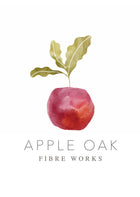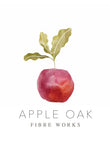Natural Dyers Academy ~ Module 6 Indigo
Welcome to module 4 - A world of Blues.
The fascination with blue dyeing never gets old and I am so looking forward to sharing it with you! There is something extremely satisfying when you understand each step of your profession and mastering an Indigo fermentation vat will likely be one of your highest goals. Have a look below and let me know what you think!

Indigo - Where does it come from?
- Introduction
- Indigo yielding plants
-
Indigo
- Indigofera tinctoria - Indian Indigo or Common Indigo
- Indigofera suffruticosa - Plantanillo
- Indigofera micheliana - Jiquilite
- Indigofera arrecta - Natal Indigo
-
Woads
-
Isatis tinctoria - Woad
-
Isatis indigotica - Chinese or Tea Woad
-
-
Knotweeds
- Dyer's Knotweed
The first Chapter will cover the most likely blue bearing plants you are going to work with. Giving an account of origin, Characteristics and differences.
-
The Substances in the plant - precursors of blue
-
The difference between Indigofera ssp. and Woad ssp.
-
How blue is made in the leaves
-
Indirubin, cis-indigotin & iso-indigo
This is probably the most scientific chapter in the entire course. I have tried to make it as accessible as possible. Let me show you one of the schematics for how the blue is made in the leaves:

What is an Indigo reduction?
-
The principles of how to create an Indigo Vat
-
The principles of to how to dye with an indigo Vat
-
The principles on how to maintain an Indigo Vat
-
Key elements on dyeing with an Indigo Vat
-
After dyeing with an indigo Vat
-
Issues with Indigo dyed fibres
The Mineral Vat
- Pros and cons of a mineral Vat
- Formula for Mineral Vat
- Making a Mineral Vat
- Key points when using a mineral Vat
We will look at pros and cons of the mineral Vat, the formula and how to make one. This will be the same for the organic Indigo Vats:
The Organic Vats
- Making an Organic Vat
- Pros and cons of Organic Vats
- The formula
- The Fruit Sugar Vat
- The Fruit Vat
- The Plant Vat
- Key Points when using an Organic Vat
The Fermentation Vat
- The fermentation Vat
- Pros and Cons of a Fermentation Vat
- Creating a fermentation Vat
- Key points when using a fermentation Vat
- The Urine Vat ~ a recipe
Probably one of the most exciting chapters and no, don't worry, we won't be making a urine vat. :) This is optional for anyone who would like to try. I added it, because the fermentation and ingredients are so different to any other kinds of Vats, that I felt it is worthwhile to read through.
Blue dyeing in the sustainable Studio
- Comparison of Indigo dyeing in the past and today
- Practical approach
- Availability
- How messy can it get?
- Smell
- Timeframes
An Excerpt: There are many artists and dyers who only work with Indigo. Their experience and knowledge is incredible and I can only admire the dedication given to one colour and its versions thereof. That is not unusual for Indigo. Indigo dyeing goes back decades and always has been an intriguing art form in Asia, shibori, being probably the most known.
Traditionally, in the west, in a large dye house 16-18th century, the use of an indigo vat was as follows: Start with as dark a vat as possible and dye as many shades as possible, according to the set colour scale. Once the Indigo vat was exhausted and no blue could be further extracted (usually after 3 days) - they started again. Indigo vats were used for full on production, with each individual vat being the size of 4000-6000L, taking 365kg of couched Woad ( the equivalent of 65kg of Indigo) and later on a combination of both, every 3 days. Each shade dyed had a destination: either as a base for another colour or straight to the finish line.
Nowadays, the demand is different. Instead of following your set colour palette, you are likely to encounter the need for a specific colour....
Maintaining and troubleshooting an Indigo Vat
This chapter has a big table - here is an example:

well, it is a lot longer ;-)
Fresh blue bearing plants and what to do with them
- Japanese fresh leaf dyeing
- Turning blue bearing plants into balls or patties
- Pigment making from fresh blue bearing plants
An Excerpt: When I arrived at this final chapter in Indigo, I thought, "omg, will we have enough time?" Using fresh woad or indigo plants has become such a vital part of Indigo dyeing and yet is almost niche specific. There will be some of you, who can't grow or don't want to grow. Some, who only want to work with fresh material, others who don't really mind and yet others who like to tick all the boxes. I decided to keep it very course specific and only focus on the 3 aspects you are likely to use: Dyeing with fresh leaves, making balls or patties for your fermentation vat and how to extract pigment the sustainable way...
I hope you like what you see! Talk soon! x Jennifer



Leave a comment